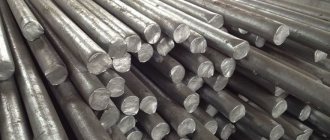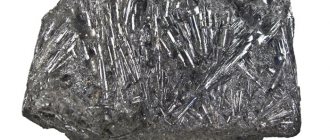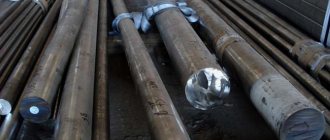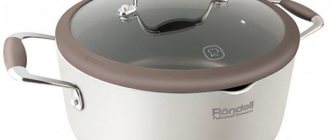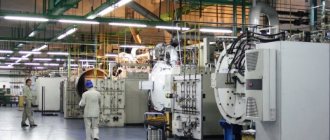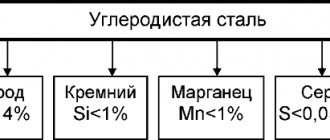Kerosene, types, chemical composition, properties and applications.
Kerosene is a flammable liquid, a flammable fuel. It is a flammable mixture of liquid hydrocarbons (from C8 to C15) with a boiling point in the range of 150-250 °C, obtained by direct distillation or rectification of oil.
Kerosene as fuel
Physical properties of kerosene
Types, types and brands of kerosene
Chemical (component, hydrocarbon and elemental) composition of kerosene
Obtaining kerosene
Application of kerosene
Other fuels: biodiesel, biofuel, gas oil, oil shale, kerosene, naphtha, fuel oil, petroleum, associated petroleum gas, natural gas, landfill gas, shale oil, shale gas, synthesis gas
Sequence for determining the specific heat of combustion
The indicator of the specific heat of combustion of kerosene establishes the conditions for its ignition in various devices - from engines to kerosene cutting devices. In the first case, the optimal combination of thermophysical parameters should be determined more carefully. There are usually several schedules for each fuel combination. These graphs can be used to evaluate:
- Optimal ratio of mixture of combustion products.
- Adiabatic flame temperature of combustion reaction.
- Average molecular weight of combustion products.
- Specific heat ratio of combustion products.
This data is necessary to determine the speed of the exhaust gases emitted from the engine, which in turn determines the engine's thrust.
The optimal fuel mixture ratio gives the highest specific impulse of energy and is a function of the pressure at which the engine will operate. An engine with high combustion chamber pressure and low exhaust pressure will have the highest optimum mixture ratio. In turn, the pressure in the combustion chamber and the energy intensity of kerosene fuel depend on the optimal mixture ratio.
In most engine designs using kerosene as fuel, much attention is paid to the conditions of adiabatic compression, when the pressure and volume occupied by the combustible mixture are in constant relationship - this affects the durability of engine elements. In this case, as is known, there is no external heat transfer, which determines the maximum efficiency.
Kerosene as fuel:
Kerosene (English kerosene from ancient Greek κηρός - “wax”) is a flammable mixture of liquid hydrocarbons (from C8 to C15) with a boiling point in the range of 150-250 °C, obtained by direct distillation or rectification of oil.
Externally, kerosene is a transparent, colorless (or slightly yellowish, or light brown), slightly oily liquid to the touch. Has a characteristic smell of petroleum products.
Kerosene is a flammable, flammable liquid. Refers to low-hazard substances and, in terms of the degree of impact on the human body, in accordance with GOST 12.1.007, belongs to the 4th hazard class. Combustible fuel.
Kerosene is lighter than water. Does not dissolve in water.
Kerosene forms explosive mixtures with air
Flash point
The next characteristic after the boiling point of kerosene is the flash point. This is a parameter that determines the degree of fire hazard of a given liquid. Here the flash point of kerosene will vary from 28 to 60 °C.
It must be said that this characteristic is strictly controlled by standards to prevent gasoline from entering the fuel, which can dramatically increase its flammability. The practical determination of the temperature of reactive flashes of kerosene liquid is prescribed by the standards of all countries of the world.
Physical properties of kerosene:
| Parameter name: | Meaning: |
| Density of kerosene at 20 °C, g/cm3 (depends on the hydrocarbon composition, type and grade of kerosene)* | from 0.78 to 0.85 |
| Density of kerosene at 20 °C, kg/m3 (depending on the hydrocarbon composition, type and grade of kerosene)* | from 780 to 850 |
| Melting/freezing point (depending on the hydrocarbon composition and type of kerosene), °C | from -60 °C to -40 °C |
| Boiling point (depending on the hydrocarbon composition and type of kerosene), °C | from +150°C to +250°C |
| Kinematic viscosity at 20 °C (depending on the hydrocarbon composition, type and grade of kerosene), mm²/s | from 1.2 to 4.5% |
| Flash point** (depending on the hydrocarbon composition, type and grade of kerosene), °C | from +28 °С to +72 °С |
| Ignition temperature** (depends on the hydrocarbon composition, type and grade of kerosene), °C | from -10 °С to +105 °С |
| Self-ignition temperature (depending on the hydrocarbon composition, type and grade of kerosene), °C | 220 °C |
| Explosive concentrations of a mixture of kerosene with air (depending on the hydrocarbon composition, type and grade of kerosene), % by volume | from 0.6 to 8.0 |
| Specific heat of combustion of kerosene (depending on the hydrocarbon composition, type and grade of kerosene), mJ/kg | from 42.9 to 46.2 |
| Sulfur content (depending on the hydrocarbon composition, type and grade of kerosene), %% | no more than 1.0 |
Note:
* with increasing temperature, the density of kerosene decreases.
** ignition temperature is the temperature of a flammable substance at which it emits flammable vapors and gases at such a speed that, after ignition from the ignition source, stable combustion occurs;
** flash point - the temperature at which petroleum product vapors form a mixture with the surrounding air that flares up when a fire is brought to it.
To conclude what has been said
All jet and turbojet fuels can be roughly divided into three main types: • Kerosene: consists primarily of hydrocarbons with carbon atoms ranging from C9 to C16. Jet A, Jet A1, JP 8, Jet A50. • “Blended”: Kerosenes are mixed with low-flash point naphthas to produce a low-boiling fuel containing hydrocarbons with carbon atoms ranging from C4 to C16. Jet B, JP 4. • High temperature kerosene: a mixture of kerosene having a minimum flash point of 60°C. Kerosene aviation fuel is mainly used. Civil aircraft are fueled with TS-1 - Russia, Jet A1 (Jet A in the USA/Canada) and Jet A50 brands, and military aircraft are fueled with JP8. Military aircraft also use “mixed” fuel (JP4), but its use accounts for less than 1% of total kerosene consumption. JP 5 is used for naval aircraft. The difference between TS-1 jet fuel, which is widely used in Russia, and its European analogue, Jet A-1, lies mainly in the production technology. Jet A-1 undergoes hydrotreating, it contains antistatic and stabilizing additives, it is less environmentally harmful, and the flash point is 10 degrees higher. It is considered safer in Europe for transporting and refueling aircraft. But here it should be noted that in world flight practice not a single accident related to the technical characteristics of TS-1 kerosene has been recorded. Moreover, the advantage of Russian jet fuel is that it can be used at much lower temperatures.
| Comparative characteristics of jet fuels TS-1 and Jet A-1 | ||
| Options | TS-1 | Jet A-1 |
| Acidity, KOH mg/100 cm3 | 0,7 | 0,1 |
| Mass fraction RSH*, % | 0,003 | 0,003 |
| Mass fraction of total sulfur, % | 0,2 | 0,3 |
| Kinematic viscosity, mm2/sec. | 8.0 (-40°С) | 8.0 (-20°С) |
| Density, kg/m3 | 780 (20°C) | 775 (15°C) |
| Flash point, °C | 28 | 38 |
| Height of non-smoking flame, mm | 25 | 25 |
| * RSH—content of mercaptan sulfur compounds | ||
Certification In the USA Jet., Europe Jet A1. In Canada Jet A (analogue of Jet A-1, Jet), Jet B (analogue of TS-1, lighter than Jet A) In Russia TS-1 (GOST 10227-86)
Types, types and brands of kerosene:
The following types of kerosene are distinguished: aviation kerosene (jet fuel), rocket kerosene, technical kerosene and lighting kerosene.
Aviation kerosene is a motor fuel for turboprop and turbojet engines of various aircraft, and is also used as a coolant in various heat exchangers (fuel-air radiators), as a lubricant for moving parts of fuel and engine systems, and as a solvent.
In Russia, five grades of aviation kerosene are produced for subsonic aviation (TS-1, T-1, T-1S, T-2 and RT), and two for supersonic aviation (T-6 and T-8B). RT brand aviation kerosene is a standardized fuel and is intended for use on aircraft with both subsonic and supersonic flight speeds.
Rocket kerosene is a jet fuel used in air-breathing rocket engines. It is also the working fluid of the engine mechanism.
Technical kerosene is used as a raw material for the pyrolytic production of ethylene, propylene and aromatic hydrocarbons, as a fuel mainly for firing glass and porcelain products, and as a solvent for washing mechanisms and parts.
Two grades of technical kerosene are produced: KT-1 and KT-2.
Lighting kerosene is a special type of kerosene intended for refilling lamps and heating devices. It is also used for degreasing rolled metal and spare parts, washing mechanisms and parts.
Four grades of lighting kerosene are produced in Russia: KO-20, KO-22, KO-25, KO-30.
Additives
Antistatic Many years of experience in operating domestic and foreign air transport have proven that when pumping fuel or when refueling aircraft, static electricity can accumulate. Due to the unpredictability of the process, there is a danger of explosion at any time. To combat this dangerous phenomenon, antistatic additives are added to fuels. They increase the electrical conductivity of the fuel to 50 pS/m, which ensures the safety of aircraft refueling and fuel transfer. The additives used abroad are ASA-3 (Shell) and Stadis-450 (Dupount). In Russia, the additive Sigbol (TU 38.101741-78) has become widespread, approved for addition to TS-1, T-2, RT and T-6 fuels in amounts up to 0.0005%. Added during production. Anti-water crystallization When refueling with fuel at a temperature of -5...+17 °C, within 5 hours of flight the temperature in the tank drops to -35 °C. The record temperature drop is -42 °C (TU-154) and -45 °C (tanks feeding the outer IL-62M engines). At these temperatures, ice crystals form in the fuel and clog fuel filters, which can cause fuel to be cut off and the engine to stall. Already at a water content of 0.002% (wt.), aircraft filters with a pore diameter of 12-16 microns begin to clog. To prevent ice crystals from falling out of the fuel at low temperatures, anti-water crystallization additives are introduced into the fuel directly at the aircraft refueling site. Ethyl cellosolve (liquid I) according to GOST 8313-88, tetrahydrofuran (THF) according to GOST 17477-86 and their 50% mixtures with methanol (additives I-M, THF-M) are widely used as such additives. Additives can be added to almost any fuel. They are added on site. Antioxidant Introduced into hydrotreated fuels (RT, T-6, T-8V) to compensate for the chemical stability reduced as a result of hydrotreating. In Russia, the additive Agidol-1 (2,6-di-tert-butyl-4-methylphenol) is used according to TU 38.5901237-90 in a concentration of 0.003-0.004%. In such concentrations, it almost completely prevents fuel oxidation, including at elevated temperatures (up to 150 °C). It is added during production. Anti-wear Designed to restore the anti-wear properties of fuels lost as a result of hydrotreating. It is introduced into the same fuels as the antioxidant additive. In Russia, the Sigbol additive and the composition of the Sigbol and PMAM-2 additives (polymethacrylate type - TU 601407-69) are used. For RT fuels, the “K” additive is often used (GOST 13302-77), which in terms of efficiency corresponds to the Sigbol additive, and also, due to the shortage of the “K” additive, the Hitek-580 additive. Added during production.
Chemical (component, hydrocarbon and elemental) composition of kerosene:
Kerosene in its chemical composition is a mixture of various hydrocarbon and non-hydrocarbon components:
– saturated, saturated hydrocarbons (alkanes) – 20-60%,
– cyclic saturated hydrocarbons (naphthenes) – 20-50%,
– aromatic hydrocarbons (arenes) – 5-25%,
– unsaturated hydrocarbons – up to 2%,
– impurities of sulfur, nitrogen or oxygen compounds.
Alkanes (saturated hydrocarbons, paraffins) are acyclic hydrocarbons of linear or branched structure, containing only simple chemical bonds and forming a homologous series with the general formula CnH2n+2. Alkanes are saturated hydrocarbons, meaning they contain the maximum possible number of hydrogen atoms for a given number of carbon atoms.
Naphthenes , also cycloalkanes, polymethylene hydrocarbons, cyclanes or cycloparaffins are cyclic saturated hydrocarbons with chemical properties close to saturated hydrocarbons. They have the chemical formula CnH2n and a cyclic structure (i.e. closed rings of carbon atoms).
Aromatic compounds (arenes) are cyclic organic compounds that contain an aromatic system.
Unsaturated hydrocarbons are open-chain hydrocarbons in whose molecules there are double or triple bonds between carbon atoms.
Sulfur compounds : hydrogen sulfide H2S, mercaptans, mono- and disulfides, thiophenes and thiophanes, as well as polycyclic (heterocyclic) sulfur compounds, etc.
Nitrogen compounds : mainly homologues of pyridine, quinoline, indole, carbazole, pyrrole, as well as porphyrins.
Oxygen compounds : naphthenic acids, phenols, resinous asphaltene and other substances.
The component composition of kerosene depends on the chemical composition and method of processing the feedstock - oil, as well as the type of kerosene.
Application of kerosene:
Kerosene is used as fuel for various engines, as a lubricant for moving parts, as a solvent for washing mechanisms and parts, as a means for degreasing surfaces, as a valuable raw material for the chemical industry, and in folk medicine.

